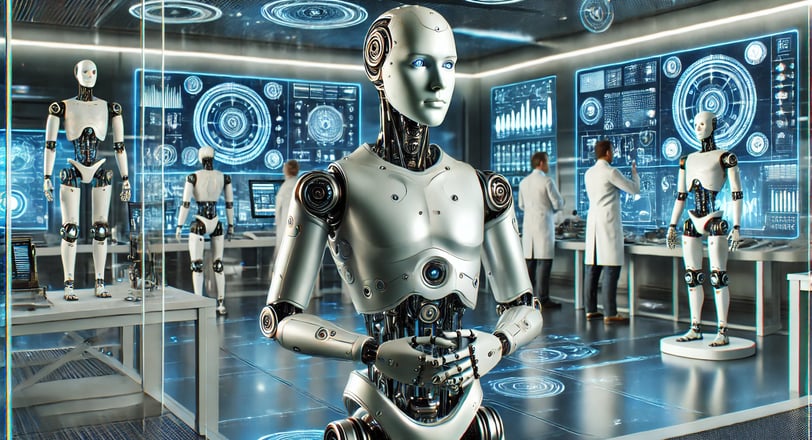Advanced Robotics and Humanoids: The Future of Human-Machine Interaction
Advanced robotics and humanoid robots are revolutionizing various sectors of society, from industry and healthcare to entertainment and space exploration. The development of this technology aims to enhance human-machine interaction, making them more intelligent, agile, and adaptable to different situations.
3/16/20252 min read


Emergence and Evolution of Humanoid Robots
The earliest concepts of humanoid robots date back to Greek mythology, such as the myth of Talos, a bronze giant created by Hephaestus to protect Crete. However, practical development only began in the 20th century, driven by cybernetics and advances in electronics.
One of the first modern humanoids was WABOT-1, developed in 1973 by Waseda University in Japan. Since then, various companies and academic institutions have heavily invested in research and development, creating increasingly realistic and functional robots.
Notable Examples of Humanoid Robots
ASIMO
Developed by Honda, ASIMO is one of the most famous humanoid robots in the world. Designed to assist in household tasks and complex environments, it can run, climb stairs, and interact with humans.
Atlas
Produced by Boston Dynamics, Atlas is a highly advanced humanoid robot capable of performing acrobatics and demanding tasks, being tested for military and rescue applications.
Sophia
Created by Hanson Robotics, Sophia is a humanoid robot with realistic facial expressions and advanced interaction capabilities. She has participated in interviews and conferences worldwide, becoming an icon of social robotics.
Types of Humanoid Robots
Humanoid robots can be classified into different categories depending on their functionality and application:
Industrial Humanoid Robots: Designed to perform complex tasks in factories and assembly lines.
Assistance Robots: Designed to help elderly or disabled people.
Social Robots: Developed to interact with humans in commercial and domestic environments.
Research Robots: Used to study artificial intelligence and human-machine interaction.
Dangers and Challenges of Advanced Robotics
Although humanoid robots offer many advantages, they also present challenges and risks, such as:
Technological Unemployment: The replacement of humans by robots may impact the job market.
Security and Control: The misuse of technology, such as in the development of autonomous military robots, raises ethical concerns.
Privacy and Manipulation: Social robots that collect data can be used to influence opinions or compromise personal security.
Curiosities and Interesting Cases
In 2017, Sophia was granted citizenship by Saudi Arabia, becoming the first robot officially recognized as a citizen.
The Atlas robot was able to run across rough terrain and perform backflips, showcasing impressive advancements in humanoid mobility.
In Japan, robots like Pepper are employed in stores and offices to interact with customers and provide information.
The Future of Humanoid Robotics
With advances in artificial intelligence and nanotechnology, humanoid robots are expected to become increasingly autonomous and versatile. They may serve as caregivers, teachers, firefighters, and even space explorers. The integration of these robots into society raises questions about regulation, ethics, and social impact, making it a subject that requires constant attention.
Conclusion
Advanced robotics and humanoids represent one of the most fascinating fields of modern technology. Despite the challenges, their potential to improve quality of life and drive innovation is immense. The future promises an increasingly harmonious interaction between humans and machines, shaping a new era of civilization.
Explore
Discover diverse topics in one convenient hub.
Connect
Learn
contact@mindstormblog.com
© 2025. All rights reserved.


